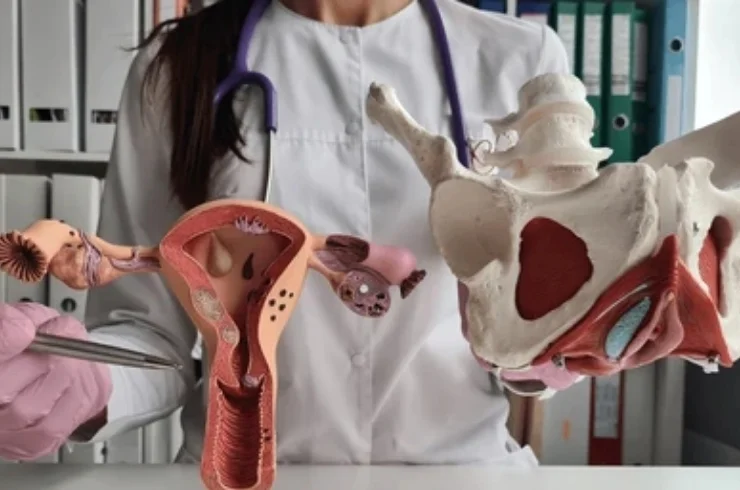
Understanding Pelvic Floor Disorders
Pelvic floor disorders occur when the muscles and connective tissues supporting the pelvic organs weaken, leading to conditions such as urinary incontinence, fecal incontinence, and pelvic organ prolapse. These issues can impact daily activities, cause discomfort, and affect a woman’s quality of life. Dr. M. Keerthi Reddy specializes in diagnosing and treating pelvic floor disorders, offering advanced care to restore strength and function.
Causes & Symptoms of Pelvic Floor Dysfunction
Pelvic floor disorders can result from childbirth, aging, chronic constipation, obesity, or previous surgeries. Symptoms may include frequent urination, difficulty emptying the bladder or bowels, pelvic pressure, or a bulging sensation in the vagina. Dr. M. Keerthi Reddy uses comprehensive assessments, including pelvic exams and imaging, to determine the severity of the condition and recommend the best treatment approach.
Treatment & Rehabilitation
Management of pelvic floor disorders includes pelvic floor therapy, lifestyle modifications, medications, and minimally invasive procedures. Advanced options like vaginal pessary placement, nerve stimulation therapy, and laparoscopic surgery are available for severe cases. Dr. M. Keerthi Reddy tailors treatment plans to each patient’s needs, helping women regain control, comfort, and confidence in their daily lives.
Frequently Asked Questions
Urinary incontinence can be caused by pregnancy, childbirth, aging, hormonal changes, obesity, or weak pelvic floor muscles. Treatment options include pelvic exercises, medications, or surgical procedures for severe cases.
Pelvic floor physiotherapy involves targeted exercises and techniques to strengthen weak pelvic muscles, improve bladder control, and relieve symptoms of incontinence or prolapse without surgery.
Postpartum recovery varies for each woman, but pelvic exercises, a healthy diet, and proper medical guidance can help restore strength within a few months. Severe issues like prolapse may require additional treatment.
